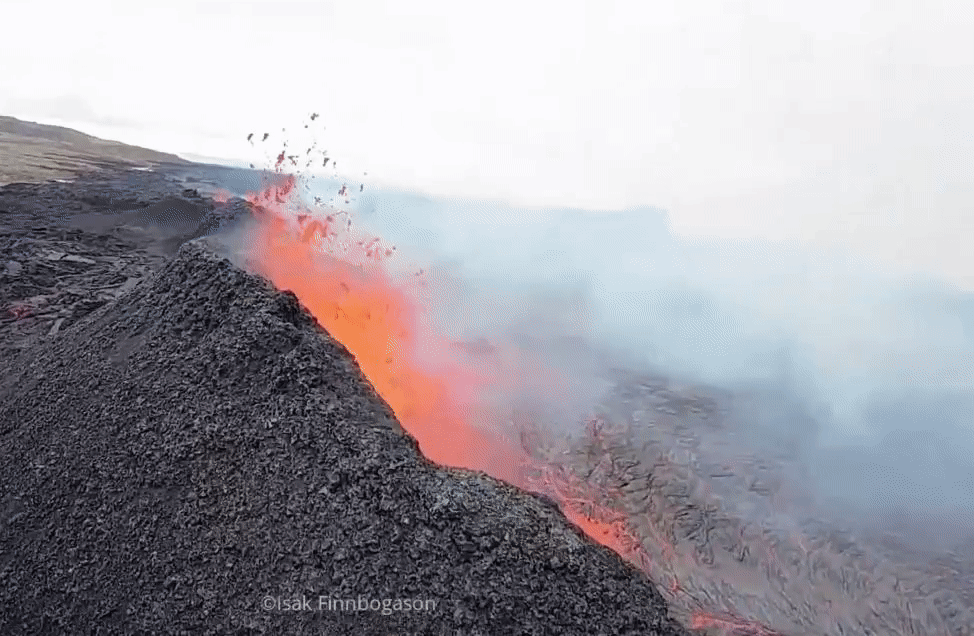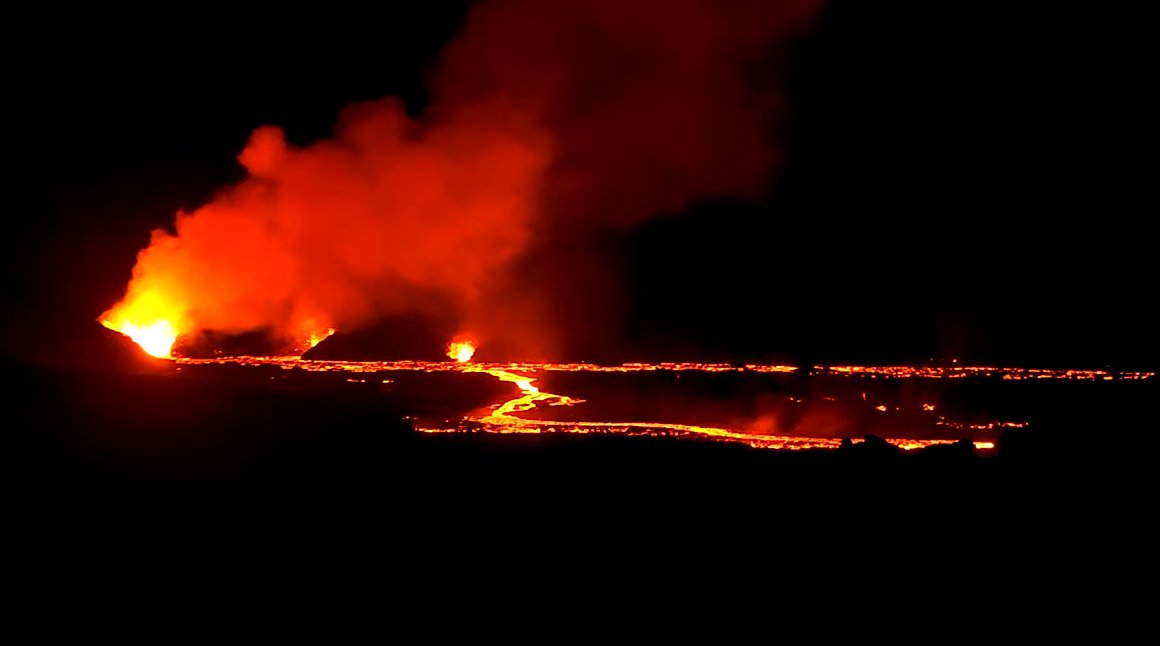WKN Weer, Klimaat en Natuurrampen
Lees alles over het onstuimige weer op onze planeet, volg orkanen en tornado's, zie hoe vulkanen uitbarsten en hoe Moeder Aarde beeft bij een aardbeving. Alles over de verwoestende kracht van onze planeet en tal van andere natuurverschijnselen.



Kan nu ook naar nummer twee gaan zoeken. Tijdens een wilde vlucht geraakt door lavabommen en gecrasht!quote:
Voorheen Post ID 101472


Denk niet dat daar nog wat van teruggevonden gaat worden ......quote:Op zondag 24 maart 2024 13:30 schreef Estate2 het volgende:
[..]
Kan nu ook naar nummer twee gaan zoeken. Tijdens een wilde vlucht geraakt door lavabommen en gecrasht!


Zijn drone is down 
Hij vloog over een van de kraters...
[ Bericht 16% gewijzigd door #ANONIEM op 24-03-2024 17:10:41 ]
Hij vloog over een van de kraters...
[ Bericht 16% gewijzigd door #ANONIEM op 24-03-2024 17:10:41 ]


Ik was te laat, maar teruggekeken ... ik vond toch al dat ie wel erg laag vloog ...quote:Op zondag 24 maart 2024 17:08 schreef aloa het volgende:
Zijn drone is down
Hij vloog over een van de kraters...


Wel vette beeldenquote:
Is ie al aan het crowdfunden voor nieuwen?
Oh how you'd have a happy life, if you did the things you like


Dat deed hij ook idd.quote:Op zondag 24 maart 2024 17:15 schreef chufi het volgende:
[..]
Ik was te laat, maar teruggekeken ... ik vond toch al dat ie wel erg laag vloog ...


Hij krijgt een hoop donaties via de chat van over de hele wereldquote:Op zondag 24 maart 2024 17:20 schreef Molo het volgende:
[..]
Wel vette beelden
Is ie al aan het crowdfunden voor nieuwen?


Bij de eruptie van vorige maand kwam er binnen een half uur zeker 1000 dollar aan donaties binnen dus die drone komt vast wel goedquote:Op zondag 24 maart 2024 17:38 schreef chufi het volgende:
[..]
Hij krijgt een hoop donaties via de chat van over de hele wereld


Deze had ie geleendquote:Op zondag 24 maart 2024 17:43 schreef Momo het volgende:
[..]
Bij de eruptie van vorige maand kwam er binnen een half uur zeker 1000 dollar aan donaties binnen dus die drone komt vast wel goed


quote:Op zondag 24 maart 2024 17:49 schreef Momo het volgende:
[..]
"Waar is de drone die ik je had geleend?"
[ afbeelding ]
Passend
Oh how you'd have a happy life, if you did the things you like


Aantal drones verzwolgen:
Sundhnúkur - 1 ?
Fagradalsfjall - meer dan 10 ?
[ Bericht 9% gewijzigd door DemonRage op 25-03-2024 06:56:44 ]
Sundhnúkur - 1 ?
Fagradalsfjall - meer dan 10 ?
[ Bericht 9% gewijzigd door DemonRage op 25-03-2024 06:56:44 ]


Is er een aardbeving of waait het zo hard bij die camera's?quote:
En dank voor het delen van de update, imposante beelden!
Oh how you'd have a happy life, if you did the things you like


Denk dat de wind soms de cameras doet trillen want aardbevingen zijn er niet veelquote:Op woensdag 27 maart 2024 23:07 schreef Molo het volgende:
[..]
Is er een aardbeving of waait het zo hard bij die camera's?
En dank voor het delen van de update, imposante beelden!


quote:Earthquake swarm in Askja caldera, ground deformation continues, Iceland
A seismic swarm occurred in the northwestern part of the Askja caldera in Iceland on March 25, 2024.
The Icelandic Met Office (IMO) detected about 30 earthquakes in the swarm between 08:00 and 12:00 UTC. The largest was M3.5 at a depth of 5 km (3.1 miles).
Three earthquakes with magnitudes between M2 and M2.5 were also detected, while the rest of the activity was characterized by smaller events.
Overall, the seismic activity in Askja has been quite stable between months and unchanged until March 25. “Looking back, we can see that earthquakes with magnitude above M3 were detected in January 2022 and October 2021,” IMO said.
eformation at Askja continued with a stable rate for two years since the end of summer 2021. Last autumn, the GNSS data indicated decreased deformation rates but the most recent ground deformation measurements based on GNSS data suggest that the rate has increased again, even though it remains at lower rates as observed prior to the autumn in 2023.
Additional data, which will be collected in the next few days, will help in clarifying and confirming the trend of the deformation process in the area, IMO said.
A satellite image acquired on March 19 shows a typical winter view of Askja Lake, where most of the lake is covered by ice except for those two well-known areas characterized by persistent geothermal activity. In February last year, Askja Lake was ice-free and considered unusual for that time of year.
The last eruptive period at this volcano lasted from October to December 1961 (VEI 2).
Askja is a large basaltic central volcano that forms the Dyngjufjöll massif. It is truncated by three overlapping calderas, the largest of which is 8 km (5 miles) wide and may have been produced primarily from subglacial ring-fracture eruptions rather than by subsidence.
A major explosive eruption (VEI 5) took place from January 1 to October 17, 1875, and entered history as one of Iceland’s largest eruptions. This eruption resulted in the formation of a smaller 4.5 km (2.8 miles) wide caldera, now filled by Öskjuvatn Lake, that truncates the rim of the larger central caldera.
A major rhyolitic explosive eruption from Dyngjufjöll about 10 000 years ago was in part associated with the formation of Askja caldera. Many postglacial eruptions also occurred along the ring-fracture.
The 100 km (62 miles) long Askja fissure swarm, which includes the Sveinagja graben, is also related to the Askja volcanic system, as are several small shield volcanoes such as Kollatadyngja.
Twentieth-century eruptions have produced lava flows from vents located mostly near Öskjuvatn lake









